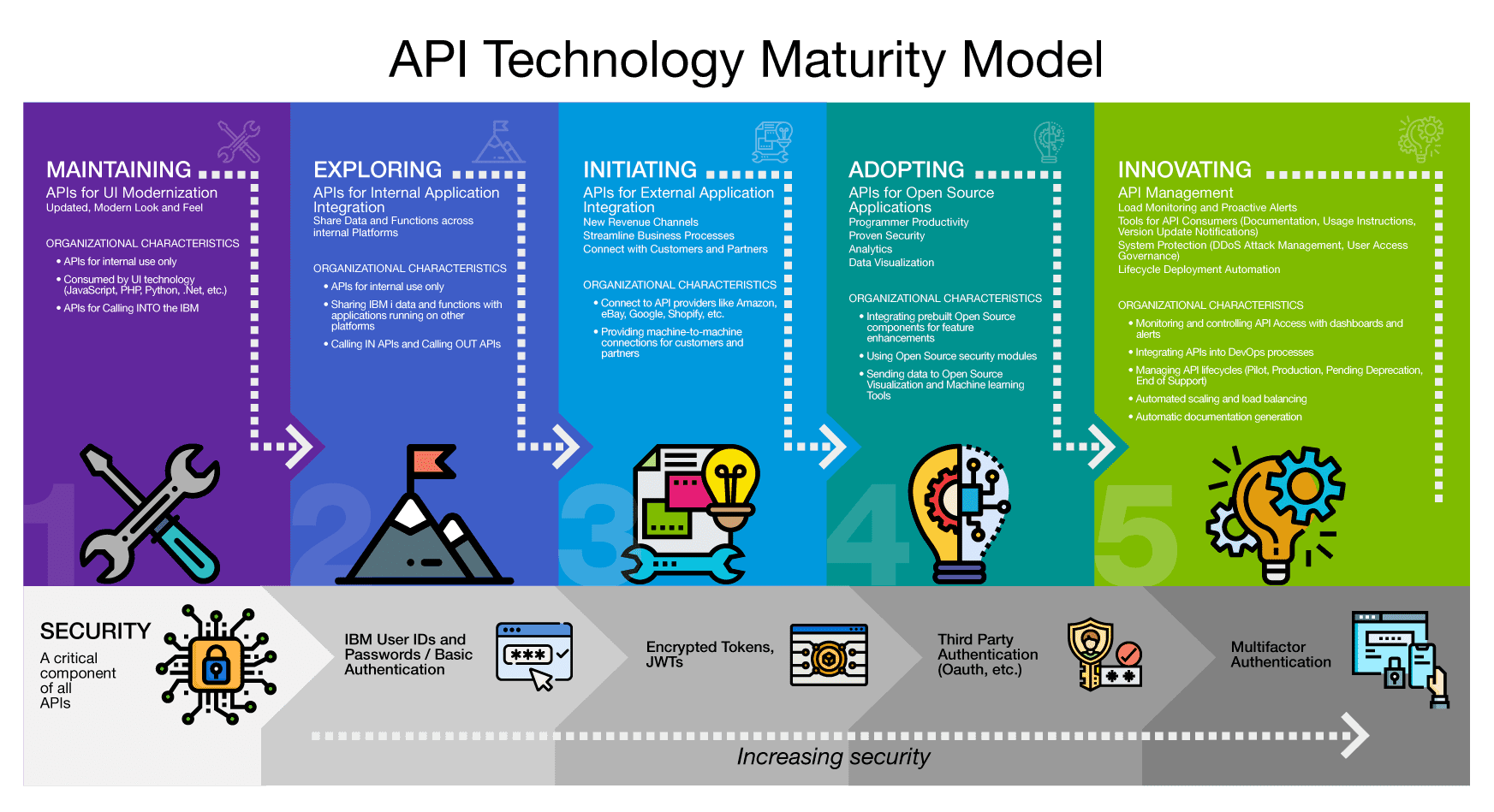
In 2021, we saw accelerating movement through the API maturity model. Companies began leveraging the power of APIs to increase revenue, decrease costs and improve customer satisfaction. At the same time, they tightened up security to ensure their systems were safe.
Maybe it was the snarled supply chain or maybe it was Covid or maybe it was just the right time, but 2021 seemed to be the year of APIs for application integration. Until this year, most of the companies we worked with on APIs were using them mainly to facilitate the creation of leading edge user interfaces that interacted with their core RPG and COBOL applications. APIs allowed them to connect web applications written in .Net, JavaScript, PHP, Python and other technologies to their IBM i functions and data. Although that remains a major API use case, in 2021 we saw very strong demand for APIs that made it easy to connect IBM i applications to applications and data on other platforms and to applications belonging to an enterprise’s customers and partners – APIs that made it possible to bypass the User Interface altogether.
Bypassing the user interface has made it possible for companies to process dramatically more transactions at lower cost and has allowed them to pursue new business opportunities. For example, we had a transportation company that was able to ramp up their quoting process to providing over one million rate quotes a day – something that would have been impossible (or prohibitively expensive) if they had to have users enter the requests through a UI. An insurance company was able to offer real time quotes to real estate companies so potential customers who were browsing properties could instantly determine their insurance costs. Several companies are now providing real time shipping information to their customers via APIs. And these are just a few of the many use cases we have seen for machine to machine communications via APIs.
One of the most exciting new trends we saw begin to emerge in 2021 was the integration of free, secure and well tested open source modules into core IBM i business processes. We have had customers use free code to create charts and graphs from their IBM i data, generate pdf documents with IBM i data, read bar codes, QR codes and print labels for shipping. Companies are using free open source modules to communicate with API providers like Google, Shopify, Amazon and eBay. They are using them for banking and payment processing, shipment scheduling, vehicle inquiries and even to get the weather forecast. By using these free prebuilt and tested modules, IT organizations are delivering new capabilities faster than ever.
At the end of 2021, we got a nasty wakeup call that all this connectivity and openness does not come without risk. The log4j vulnerability exposed the potential danger of the widespread use of common code. If there is a vulnerability, it can impact everyone simultaneously. We are going to see the fallout from that exposure play out over the next several months. The good news is that the open source community responded immediately with patches and instructions for remediating the problem. Log4j was a sharp reminder of the importance of keeping our systems up-to-date with the latest patches. The challenge for 2022 and beyond is to constantly improve our ability to leverage APIs while keeping our systems safe.
API Security has been a primary focus of Eradani in 2021 and will continue to guide our efforts in 2022. You can learn more about API Security in this blog post: https://www.eradani.com/2021/12/16/keeping-your-ibm-i-safe-in-the-face-of-attacks-like-log4shell/ or by watching the recording of this webinar: https://eradani.com/securely-api-enable-your-ibm-i-applications/. Making it easy to API enable IBM i systems while keeping those systems safe are the twin pillars of Eradani’s strategy for 2022. To learn more about secure API enablement for the IBM i, visit the Eradani website at www.eradani.com. Have a wonderful, safe and connected 2022!

